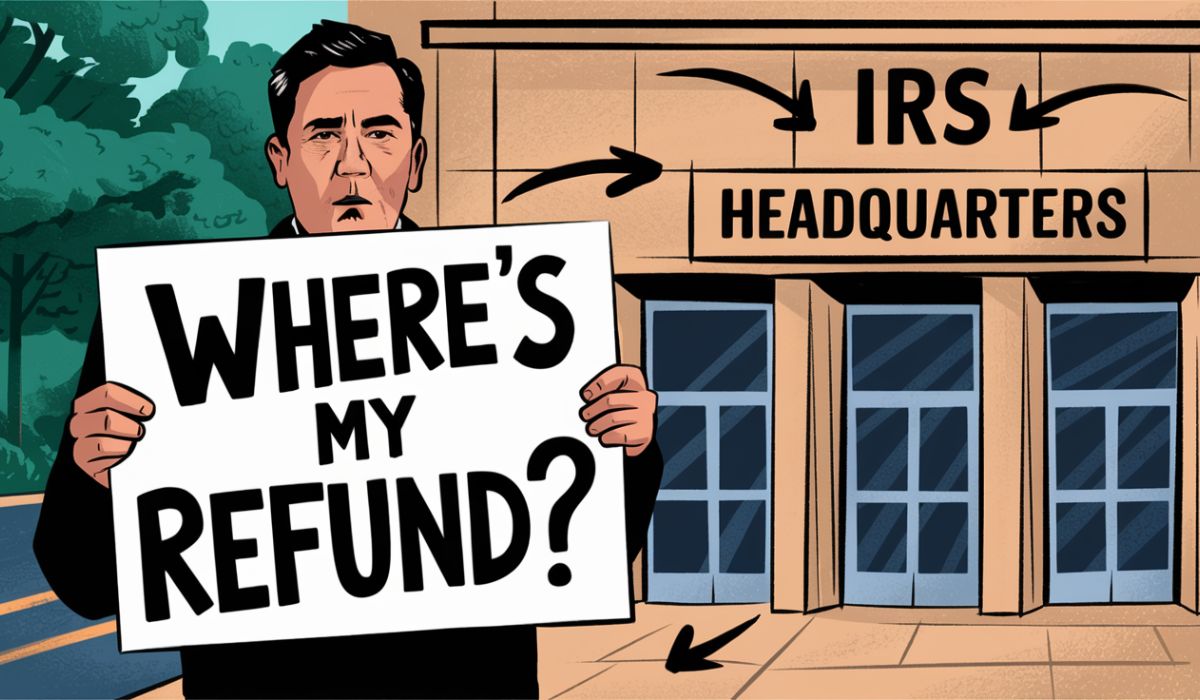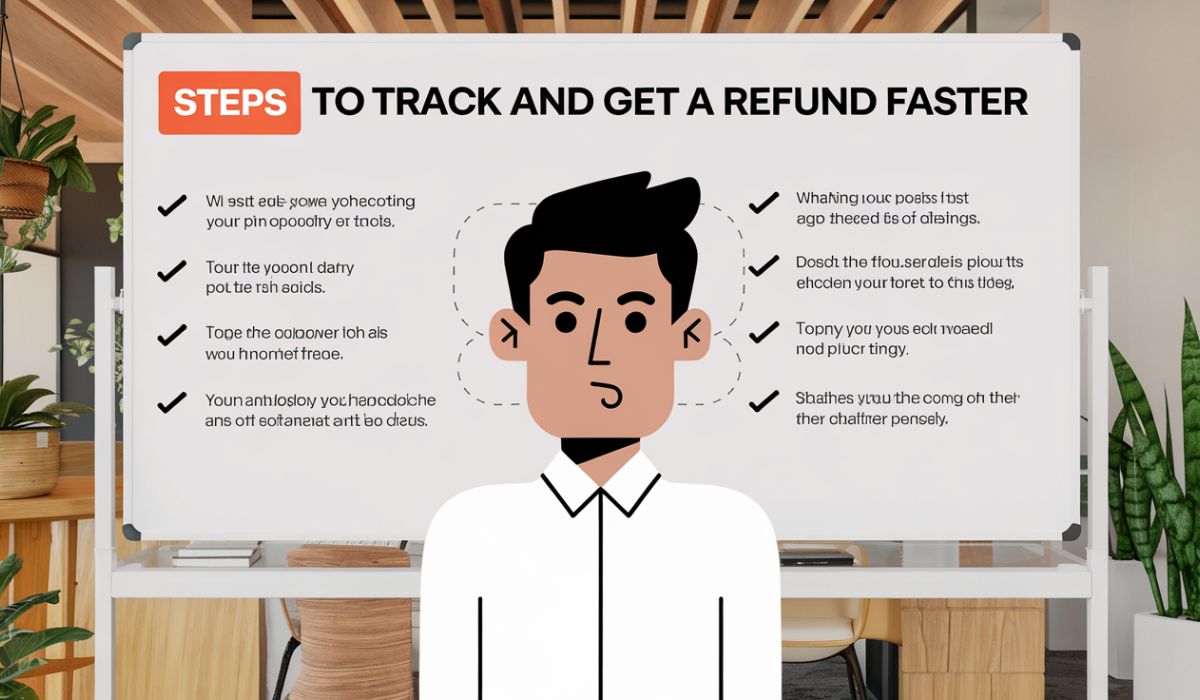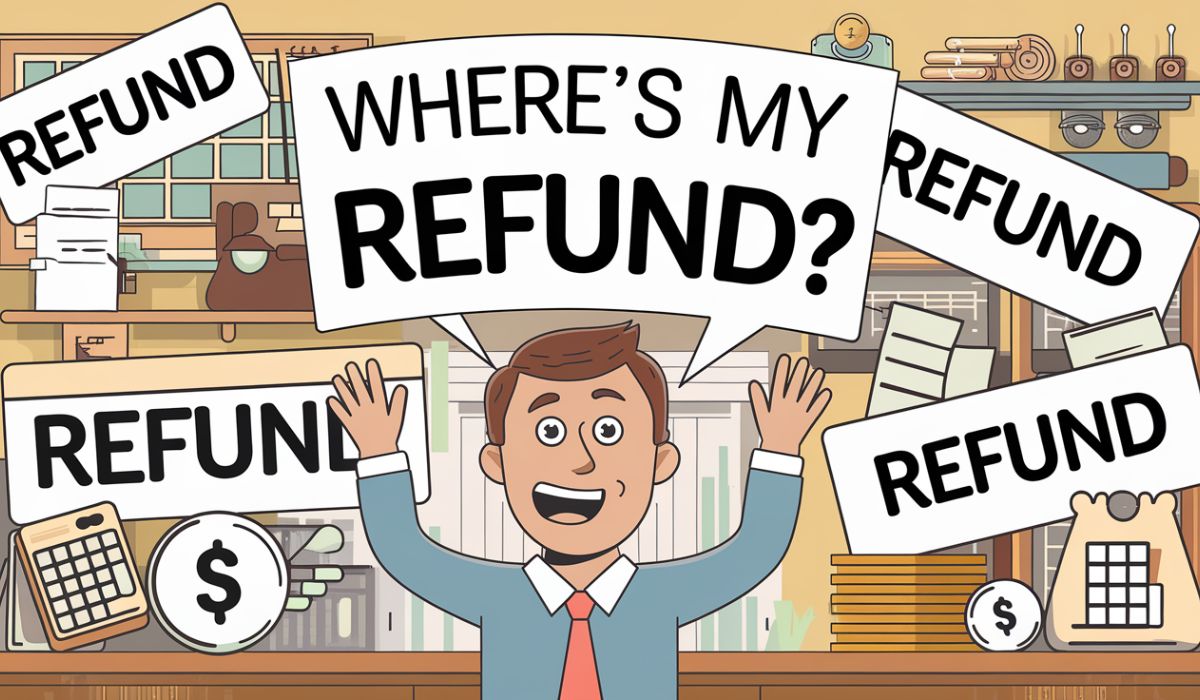Introduction
Waiting for your tax refund can feel like waiting for a package that never arrives. You know it’s coming, but when? If you’ve found yourself asking, “Where’s my refund?”—you’re not alone! Millions of people eagerly anticipate their tax refunds each year. But what if it’s delayed? Don’t worry! This guide will help you understand how to track your refund, what causes delays, and how to speed up the process
Understanding Your Tax Refund

Your tax refund is the amount the IRS returns to you if you overpaid taxes throughout the year. It’s essentially your money coming back to you. If your employer withheld too much from your paycheck or you qualify for tax credits, you’ll likely receive a refund.
How to Check Your Refund Status?
Wondering where your refund is? You can check its status online, by phone, or through the IRS mobile app. The IRS updates refund statuses daily.
IRS Where’s My Refund Tool
The IRS has an online tool called “Where’s My Refund?” that allows you to track your refund status. You’ll need:
- Your Social Security Number (SSN) or ITIN
- Your filing status
- The exact refund amount
You can access the tool on the IRS website or through their mobile app, IRS2Go.
Common Reasons for Refund Delays

Several factors can delay your refund, including:
- Errors in your tax return (incorrect SSN, wrong calculations)
- Incomplete information
- Claiming Earned Income Tax Credit (EITC) or Additional Child Tax Credit (ACTC)
- Amended returns or identity verification
- Bank account issues for direct deposit
How Long Does It Take to Get a Refund?
The IRS typically processes refunds within 21 days for electronic filers and 6-8 weeks for paper returns. However, delays can happen due to errors or additional verification.
What If Your Refund Is Smaller Than Expected?
If your refund is less than you expected, it may be due to:
- Federal or state debts (student loans, child support, or unpaid taxes)
- Math errors or adjustments
- IRS audits or corrections
Check your IRS account for details on any changes.
How to Avoid Tax Refund Delays?

- File electronically instead of mailing a paper return.
- Double-check all details before submitting.
- Opt for direct deposit instead of a paper check.
- Avoid claiming credits that require extra verification unless you’re eligible.
Direct Deposit vs. Paper Check: Which Is Faster?
Direct deposit is the fastest way to get your refund, usually within 21 days. Paper checks take longer and can get lost in the mail.
What to Do If Your Refund Is Lost?
If your refund was sent but never arrived, you can request a refund trace from the IRS. If it was a check, they can reissue it. If it was a direct deposit, check with your bank first.
How to Contact the IRS for Refund Issues?
You can call the IRS at 800-829-1040, but wait times can be long. It’s best to use the “Where’s My Refund?” tool first.
State Tax Refunds: How Are They Different?
State tax refunds are separate from federal refunds. Each state has its own processing time and refund tracking system. Visit your state’s tax website to check the status.
Tax Refund Scams: How to Protect Yourself
Scammers may pretend to be the IRS to steal your refund. Protect yourself by:
- Never sharing personal information over email or phone
- Checking the IRS website directly
- Ignoring suspicious messages claiming you owe money
Tips to Get Your Refund Faster Next Year
- File early
- Double-check your return for errors
- Use direct deposit
- Keep your records organized to avoid delays
How Refunds Work for Amended Returns
If you file an amended return (Form 1040-X), refunds take longer—usually 16 weeks or more.
Conclusion & FAQs
Tracking your tax refund doesn’t have to be stressful. Use the “Where’s My Refund?” tool, check for common delays, and ensure your information is correct. By staying informed, you can get your refund as quickly as possible.
FAQs
1. How often is “Where’s My Refund?” updated?
The IRS updates it daily, usually overnight.
2. Can I check my refund status without my Social Security Number?
No, you need your SSN or ITIN to check your refund status.
3. Why does “Where’s My Refund?” say my refund is still being processed?
This usually means the IRS is reviewing your return for errors or additional verification.
4. Can I change my direct deposit information after filing?
No, if the deposit fails, the IRS will mail you a paper check instead.
5. How do I know if my refund was sent?
Check the “Where’s My Refund?” tool. It will show the deposit date or if a check was mailed.
For More Visit, rankshort
